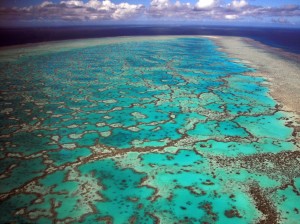 Flying over the Great Barrier Reef toward Heron Island.
Flying over the Great Barrier Reef toward Heron Island.
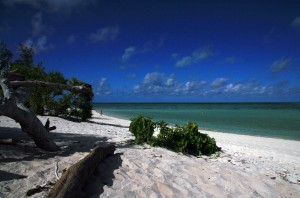 On the beach at Heron Island.
On the beach at Heron Island.
OK, I have to admit it: if there’s one place in the world that I could describe as paradise, Australia’s Great Barrier Reef would come pretty darn close. Turquoise blue waters, pristine white sand beaches, spectacularly colored fish in bright yellows and purples, zebra stripes, polka dots, neon blue and red swim by corals in cobalt greens, deep purples and neon orange. Sharks, sting rays, sea cucumbers, star fish, turtles. This is a diving and snorkeling paradise and one of the wonders of the natural world. People come here with watch dive computer systems and have a grand time exploring all that they could. The area is ripe for discovering.
The island here is Heron. It’s on the Tropic of Capricorn at the southern end of the Great Barrier Reef and is 72 kilometers off the coast of Gladstone, Queensland. It’s about a two-hour boat ride from Gladstone or a 30-minute helicopter ride. Heron Island is small – only 800 meters long and 300 wide at its largest – but it’s a coral cay, meaning that it’s composed of sand and coral fragments and is thus a part of the living reef organism. That means that you step off the sandy beach and can snorkel directly over the reef.
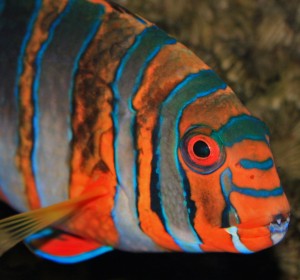 A beautifully colored parrot fish
A beautifully colored parrot fish
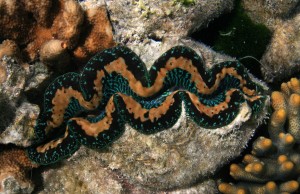 And an equally colorful clam.
And an equally colorful clam.
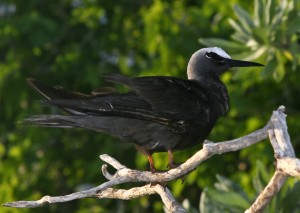 A noddy tern.
A noddy tern.
Even though the island is small, it’s easy to not run into people if you don’t want to. Beaches surround the island and a forest of pisonia trees is in the center. Coastal she-oaks and pandanus palms line the fringes of the beach. The forest and dunes provide homes for thousands of nesting seabirds, including the wedge-tailed shearwater and noddy terns. Heron is also a nesting ground for both green and loggerhead turtles and on one trip, we watched a mother laying her eggs in the sand while on another, we watched turtles hatch and make their way to the ocean.
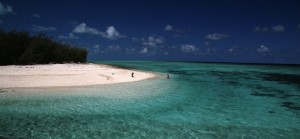 Looking toward Heron.
Looking toward Heron.
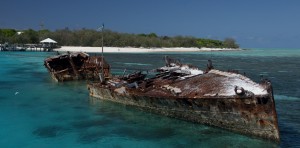 The wreck provides a breakwater as you pull into the harbor.
The wreck provides a breakwater as you pull into the harbor.
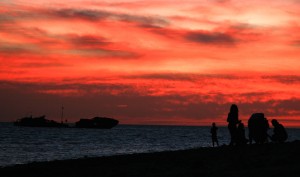 Sunset over the reef.
Sunset over the reef.
As for the reef itself, you can easily snorkel right off the beach or take a dive boat out to the reef edge. There at the edge, we snorkeled through an area called “The Hole in the Wall.” As we paddled through tunnels of aquatic life, a giant green turtle swam by and then coral trout, clown fish and surgeonfish. At first we didn’t notice the giant shovel-nosed rays buried in the sand on the bottom of the sea, but then we started seeing fins jutting out of the sand and eyes looking at us. There were also blood red and cobalt blue starfish, wavy-edged clams with psychedelic color combinations of electric blue and purple and neon green, brain coral, hermit crabs, pincushions and nudibranches.
Back on dry land, from November to January, female loggerheads and green turtles lay eggs on Heron Island. Then from late January to May, the hatchlings emerge. January is the peak breeding season for seabirds, including black noddy terns, mutton birds and reef herons. Humpback whales can be seen migrating from June to September.
Just looking at the photos here, I can feel the warmth of the sun and the softness of the sand, see the crystal clear water. Oh I wish I was there now. But in the meantime, I’ll consider myself lucky that I’ve been to the reef at all.

Comments on this entry are closed.